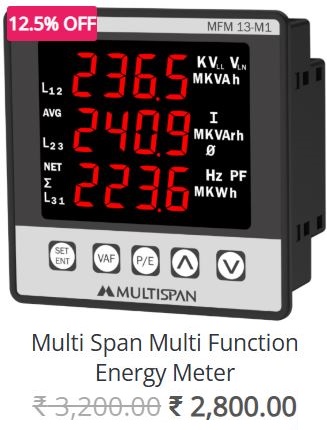In the fast-paced world of manufacturing, one of the key factors that determine efficiency and productivity is the time it takes to switch from one product to another. This process, known as “changeover,” can significantly impact production output, especially when working with small batches or varied product lines. Long changeover times lead to increased downtime, lower utilization of equipment, and ultimately, higher production costs.
This is where SMED—Single-Minute Exchange of Dies—comes into play. Developed by Shigeo Shingo in the 1950s, SMED is a lean manufacturing technique designed to reduce changeover time to single-digit minutes, ideally under 10 minutes. The goal of SMED is not just to improve the speed of switching from one product to another, but to also enhance overall manufacturing efficiency, reduce waste, and create a more flexible production environment.
In this blog, we’ll explore the concept of SMED in greater detail and explain how it contributes to lean manufacturing by reducing changeover time and improving operational efficiency.
The Benefits of SMED in Lean Manufacturing
Implementing SMED within a manufacturing environment offers a wide range of benefits, particularly in the context of lean manufacturing. Here are the most significant advantages:
1. Reduced Downtime
The most obvious benefit of SMED is the significant reduction in downtime between production runs. Long changeover times mean that machines are idle for extended periods, which reduces their overall utilization. By reducing changeover time, machines can spend more time in production, increasing throughput and minimizing the gap between product runs.
2. Increased Flexibility and Responsiveness
In today’s competitive market, manufacturers need to be able to respond quickly to customer demand. SMED allows for shorter, more frequent production runs, making it easier to adapt to changes in order volumes, product mix, or customer preferences. Manufacturers can produce smaller batches and switch between different products with minimal delays, improving their ability to meet customer needs efficiently.
3. Improved Productivity
By minimizing changeover times, manufacturers can increase their output without requiring additional resources. With faster changeovers, workers spend more time on productive tasks, and machines are used more efficiently. This leads to higher overall productivity, which is crucial for maintaining competitive advantage in today’s fast-moving manufacturing landscape.
4. Cost Savings
Reducing changeover time results in significant cost savings. First, there’s less downtime, meaning more output for the same resources. Second, by reducing the need for large inventory stocks (because smaller production batches can be produced more frequently), companies can cut storage and handling costs. SMED also enables the production of smaller lot sizes, which leads to better inventory management and less waste.
5. Enhanced Quality
With SMED, operators can focus on quality throughout the process rather than on setting up or adjusting equipment. A faster and more efficient changeover means that workers can devote more attention to inspecting and ensuring quality during production. In addition, the faster and more standardized setup processes reduce the risk of human error, leading to fewer defects.
How SMED Works: A Step-by-Step Overview
Now that we understand the benefits of SMED, let’s dive into how you can implement it in your own operations. The SMED process can be broken down into a series of steps designed to identify and eliminate inefficiencies during changeovers.
Step 1: Observe the Current Process
The first step in implementing SMED is to observe and document the current changeover process. This includes noting down each step involved in the changeover, whether it’s an internal or external activity. Understanding the current process is essential because you can’t improve what you don’t fully understand.
At this stage, it’s also important to measure how long each task takes. This will help you identify where time is being wasted and what parts of the process require the most attention.
Step 2: Separate Internal and External Setup Activities
Next, analyze your changeover tasks and separate internal from external setup activities. Internal setup activities are tasks that can only be done when the machine is stopped, such as replacing dies or adjusting machine settings. External activities, on the other hand, can be done while the machine is still running, such as preparing tools, gathering materials, or pre-setting machine parameters.
The goal here is to move as many tasks as possible from the internal setup category to the external setup category. This allows for parallel work and reduces the time that the machine is idle.
Step 3: Streamline Internal Setup Activities
Once you’ve identified the internal activities, look for ways to make them more efficient. This can include:
- Standardizing work procedures: Create standardized operating procedures for internal setup tasks so that they can be performed more quickly and with fewer errors.
- Using quick-change tooling: Invest in quick-change systems, such as modular tools, clamp systems, or pre-set tooling, that can be swapped out rapidly.
- Improving ergonomics: Arrange tools and equipment in a way that minimizes movement and ensures that everything needed for the setup is within easy reach.
Step 4: Streamline External Setup Activities
For external setup tasks, focus on preparing everything in advance to ensure smooth transitions when the machine is stopped. For example:
- Prepare tools and materials beforehand: Gather all tools, components, and materials needed for the next production run before the changeover process begins.
- Pre-set machine settings: If possible, pre-set the machine parameters or adjust the equipment in advance while the machine is still running to minimize adjustments when the changeover occurs.
Step 5: Implement Quick-Change Tooling
Investing in quick-change tooling is one of the most effective ways to reduce internal setup time. Quick-change tooling allows operators to switch tools, dies, or components rapidly without the need for extensive adjustments. This can include using tools that automatically lock into place, modular tooling systems, or hydraulic clamping systems that significantly reduce the need for manual adjustments.
Step 6: Continuously Improve and Train Operators
After implementing SMED, it’s crucial to monitor progress and continuously improve. Hold regular review sessions to track the success of your changeover reductions and refine processes as needed.
Additionally, ensure that all operators are trained in the new procedures and are involved in the process of continuous improvement. Encourage them to suggest ideas for further reducing changeover times and eliminating waste.
Conclusion
SMED is a powerful lean manufacturing tool that helps organizations minimize changeover times, reduce downtime, and improve production efficiency. By focusing on reducing the time required for switching between products, manufacturers can enhance flexibility, increase throughput, lower costs, and improve overall productivity.
Implementing SMED may require investment in tooling, training, and process redesign, but the long-term benefits—such as higher equipment utilization, quicker response times, and cost savings—make it a crucial strategy for modern manufacturers looking to stay competitive in today’s fast-paced environment. Whether you’re working in automotive, electronics, food production, or any other manufacturing industry, SMED can be a transformative tool that drives continuous improvement and supports your lean manufacturing goals.















